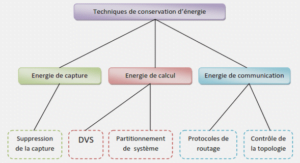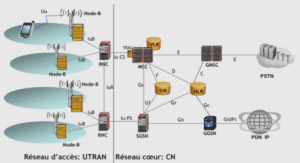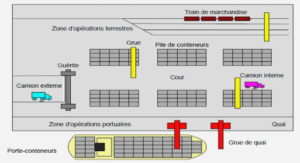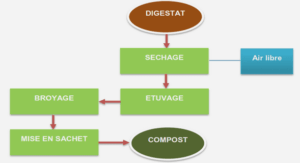Smelter grade alumina
Alumina is used as refractory material, desiccant, it is used in ceramics, composites, even toothpaste – but most importantly, it is the raw material of aluminium production.
Production of SGA
Alumina is produced by the Bayer process from bauxite. Crushed bauxite is digested in a caustic solution at high pressure and temperature; the alumina is brought into the solution while the impurities remain solid, and are disposed of as red mud (bauxite residues). From the clarified solution, gibbsite (Al(OH)3) crystals are precipitated. During the last step of the Bayer process, calcination, aluminum hydroxide grains are heated to a high temperature and the material transforms into alumina. Transformation to the stable corundum phase (alpha alumina), requires a temperature above 1200 °C. Depending on the calcination technology, temperature and retention time, the properties of the resulting SGA may vary.
Primary alumina can be fed directly into the aluminium electrolysis cell, or processed further by the dry scrubbing. The main purpose of dry scrubbing is to remove fluorides from the anode gas, for both environmental and economic reasons, but it also has a significant effect on the alumina, which is used in the process – referred to as secondary alumina. By adsorbing the anode gas, the alumina is replenishing fluorides lost by evaporation, into the bath. Due to the mechanical impact of the process, the particles can break up, decreasing the average particle size, increasing the percentage of fines.
Specifications also differ between companies, and since easily measurable properties do not translate well/directly into preferred behavior in the smelter, this is unlikely to change in the future [1] [2] [3] [4]. [5] [6]. Many of the properties are not independent, and it could be challenging, if not impossible to change only one, which can make drawing conclusions from experiments difficult [7] [8].
Structure
Historically, two kinds of SGA were used, sandy and floury, the latter having a high alpha alumina content and small particle size. With the environmental and economic need to clean anode gas and recuperate fluorides via dry scrubbing, floury alumina got out of use, as it is less efficient in the adsorption of HF. Generally, SGA is expected to contain less than 5% alpha alumina (corundum) these days [1] [9]. The alpha phase is located on the surface of the particles and along the cracks in the grains, the parts exposed most to the high temperature during calcination. The bulk of SGA consists of transitional phases of alumina: gamma, gamma-prime phases and theta [10] [11]. As these transitional phases are in low-crystalline form, unlike corundum, they cannot be clearly distinguished by X-ray diffraction, and as consequence, they are usually grouped together under the gamma category in the industry, without further distinction. Residual hydroxides are tolerated at some extent, impurities may be also present [2] [12].
SGA is a polydisperse powder, the majority of particles range between 40 and 100 µm. The quantity of larger and smaller particles are controlled, especially the ultra-fines (<20 µm). The structure of particles resembles the structure of aluminum-hydroxyl, with cracks on their surface [13].
Density
The bulk density, an easily measurable characteristic of SGA, can vary between 0.9 1.15 g/cm3 . The skeletal density depends on the phase distribution, around 3.5-3.7 g/cm3, larger with higher alpha content (alpha: 3.99, theta: 3.6, gamma: 3.2-3.7 g/cm3 ) [14]. As the ratio of bulk density and skeletal density shows, the porosity of the SGA is quite high; this is due to the intra-particle porosity in the transitional phases of alumina.
Moisture content
The moisture content of alumina is usually characterized by the loss on ignition (LOI), the weight loss of the material when heated to a specific temperature. Humidity can be bound to alumina at different levels, influenced by its structure. The alpha phase in SGA cannot adsorb water, but the transitional phases, the majority of SGA, can. The first layer of adsorption is chemisorption, `dissociative addition of water molecules on aluminium oxide surface sites`, then several layer of water can be bonded by physisorption via Van der Waals forces, and finally, capillary condensation in the pores. Most of the moisture escape the alumina at around 150 °C, which is also the approximate temperature of alumina fed into the electrolysis cell, but for complete drying, temperature over 200 °C is needed, in vacuum or dry gas [15] [16].
Another source of water in SGA can be attributed to residual hydroxyls. Gibbsite (Al(OH)3) and boehmite (AlOOH) can be present in SGA, due to incomplete calcination process [9] [17] [11]. Despite the misleading terms: alumina hydrate, crystalline water, dehydration sometimes seen in the literature [12] [18], alumina does not contain lattice water [9]. While water is result of the transformation, it is not present in the material as H2O. Gibbsite transforms to boehmite at around 300 °C, but the transformation of boehmite into gamma alumina is not so clear cut. According to different sources, gamma alumina occurs at 400 °C [10], the ‘residual hydrate’ leaves by 500 °C [12], or the transformation to alumina occurs only above 700°C [18]– while the gamma-delta phase transformation is also set at 700-800 °C [14]. Gamma alumina itself may contain hydrogen atoms, randomly distributed in the structure, which would leave only above 1000 °C [10], at the transformation to corundum.
For secondary alumina, the desorption of fluorides also occurs at high temperatures, contributing to the LOI. Haverkamp found that there was no desorption below 500°C, with a peak around 700 °C [19]. This finding is in accordance with Gillespie, who observed no fluoride loss of secondary alumina below 440 °C [20]. Young found that around half of the fluorides escaped as HF below 740 °C with H2O, while the rest desorbed as chiolite between 740-1100 °C [21]. The moisture content of alumina is known to have beneficial effect on its dissolution rate to up to a certain point, but excess moisture delays dissolution, as the surplus energy demand of evaporation freezes more bath in the vicinity of the injected powder. [22]
|
Table des matières
Table of contents
Acknowledgements
Résumé
Abstract
Table of contents
List of tables
List of figures
List of equations
Notation
Introduction
1 Context of research problem
1.1 Smelter grade alumina
1.1.1 Production of SGA
1.1.2 Structure
1.1.3 Density
1.1.4 Moisture content
1.1.5 Thermal properties of alumina powder
1.1.6 Other properties; interconnectedness
1.2 Properties of electrolytic bath
1.2.1 Composition
1.2.2 Temperature
1.2.3 Density
1.2.4 Surface tension
1.3 Behavior of alumina in the bath
1.3.1 Dissolution
1.3.2 Crusting, agglomeration and sintering
1.3.3 Flotation on the bath surface
1.3.4 Flotation on BMI
1.3.5 Sludge
1.3.6 Alumina phases
1.3.7 Secondary alumina
1.3.8 Feeding
2 Conditions of steady-state flotation on bath surface
2.1 Mathematical model
2.1.1 Force balance of a floating axisymmetric object in equilibrium
2.1.2 Meniscus height
2.1.3 Angle of interface at the triple line
2.1.4 Shape of the floating object
2.1.5 Dimensionless equations
2.2 Results
2.2.1 General (dimensionless, contact angle dependent)
2.2.2 Flotation limit on cryolitic bath surface
2.3 Comparison of model with experiments on bath surface
2.3.1 Compressed alumina discs
2.3.2 Alumina spheres
2.3.3 Gravimetric tests
3 Alumina raft formation– shape and role of surface tension
3.1 Description of the experimental setup
3.1.1 Smelter grade alumina
3.1.2 Alumina injections with video recording
3.1.3 Compressed alumina discs as artificial rafts
3.1.4 Gravimetric system
3.2 Injection of SGA – Raft formation and shape
3.2.1 Injection of alpha alumina – effect of bulk density
3.2.2 Particle size/fines
3.2.3 Effect of moisture content on the shape of alumina rafts
3.2.4 Bath solidification
3.3 Surface tension
3.3.1 Contact angle
3.3.2 Roughness of smelter grade alumina
3.3.3 Influence of foreign particles on the bath surface
3.3.4 Raft contacting carbon wall/anode during formation
3.3.5 Agitation of bath surface
4 Evolution of raft’s apparent density
Conclusion
![]() Télécharger le rapport complet
Télécharger le rapport complet






